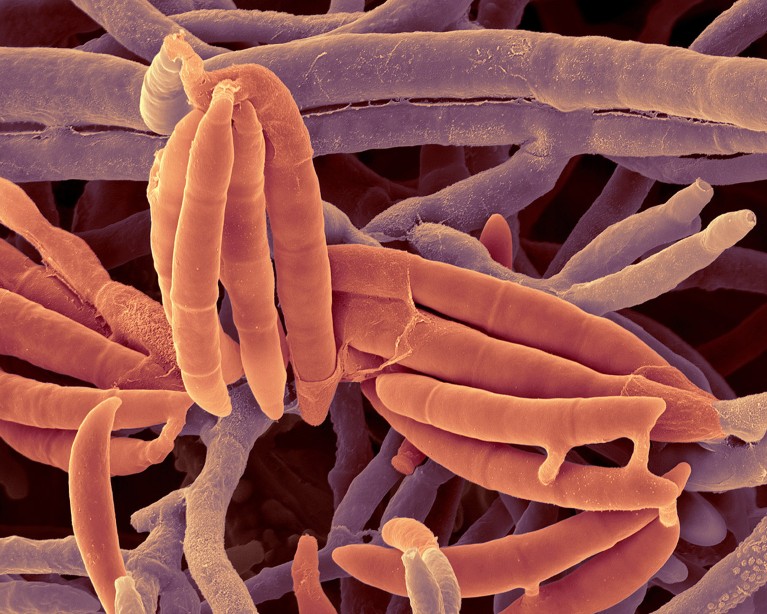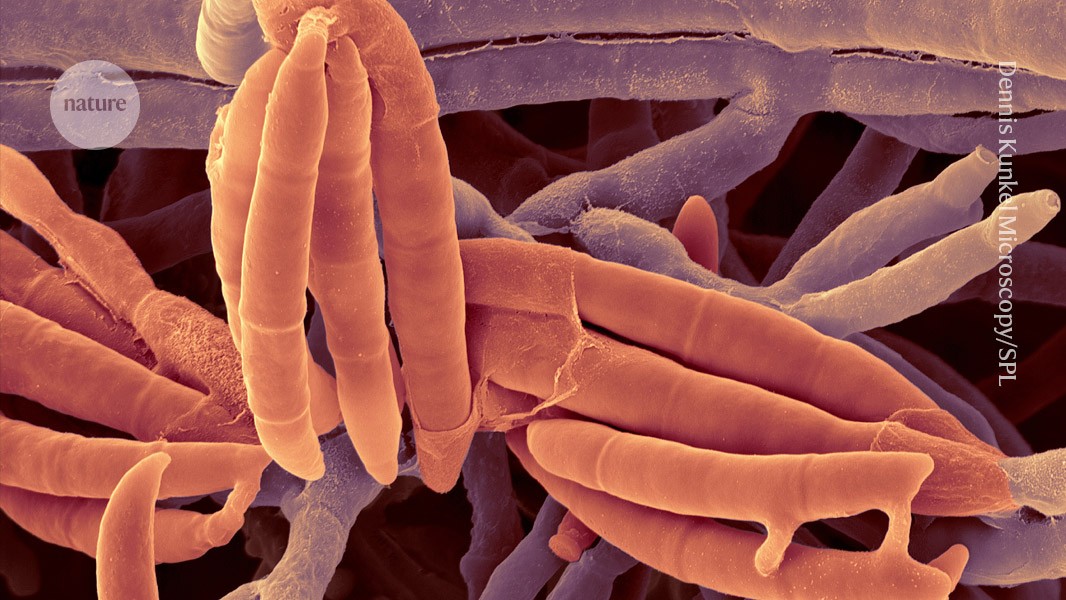
Filamentous fungi are frequently found in the human gut.Credit: Dennis Kunkel Microscopy/Science Photo Library
A common intestinal fungus produces a molecule that reduces symptoms of non-alcoholic fatty liver disease in mice, according to research published in Science today1.
The study marks a step forward in improving treatments for the disease, which affects roughly 30% of adults worldwide. Only one medication for the condition has approval from the US Food and Drug Administration, and it has limited effectiveness.
Before this study, the role of the fungus, called Fusarium foetens, in the human microbiome and its interactions with metabolism were poorly understood. “We had little understanding of how this fungus evolved to colonize the intestines of healthy individuals,” says co-author Jiang Changtao, a microbiologist at Peking University Third Hospital in Beijing. Previous studies have shown that gut yeast — a type of fungus — can aggravate alcoholic fatty liver disease2, but whether filamentous fungi such as F. foetens could affect liver conditions was unclear.
Changtao and his colleagues cultured F. foetens from human faeces using an isolation and culturing system that they designed. They gave the fungus to mice with a type of fatty liver disease called metabolic dysfunction-associated steatohepatitis (MASH) and found that it markedly improved MASH symptoms, such as reducing already existent liver swelling and liver scarring from the disease.
Ultimate cause
The researchers then investigated how the metabolisms of treated mice changed. They found that the effect was caused by slowed synthesis of fatty molecules called ceramides. Ceramides are important for interactions between the intestine and the liver but are found at elevated levels in humans and mice with MASH.
The researchers harvested molecules secreted by F. foetens from the fungal culture’s growth medium and found that the secretions alone inhibited ceramide synthesis. The team analysed the growth medium closely and found one molecule that inhibits an intestinal ceramide-synthesizing protein called CerS6.
The molecule had already been found in multiple fungal species, but its effect on MASH was unknown. Now, Changtao and his team plan to further analyse molecules produced by F. foetens to “provide a new and effective approach for the clinical treatment of MASH”.


